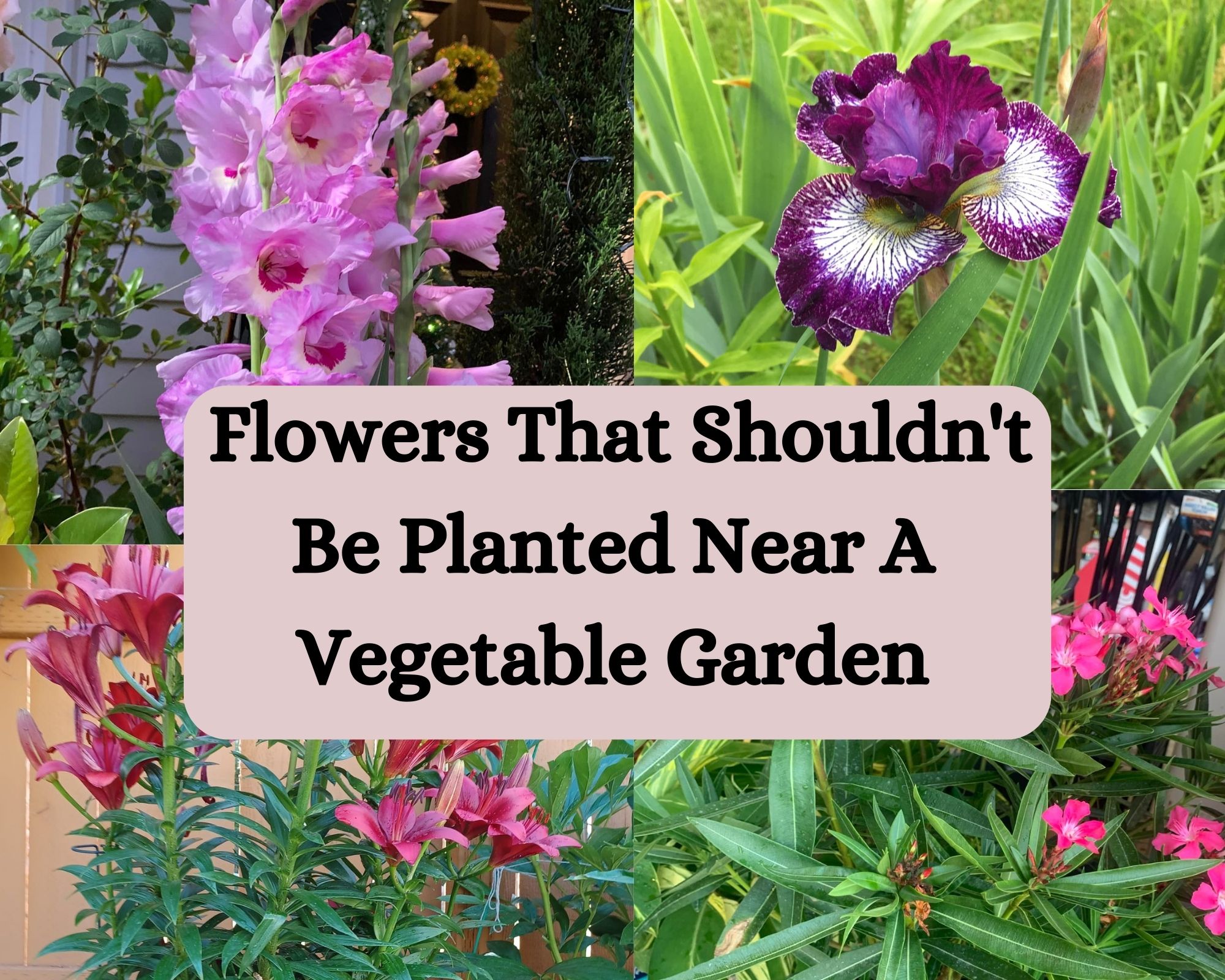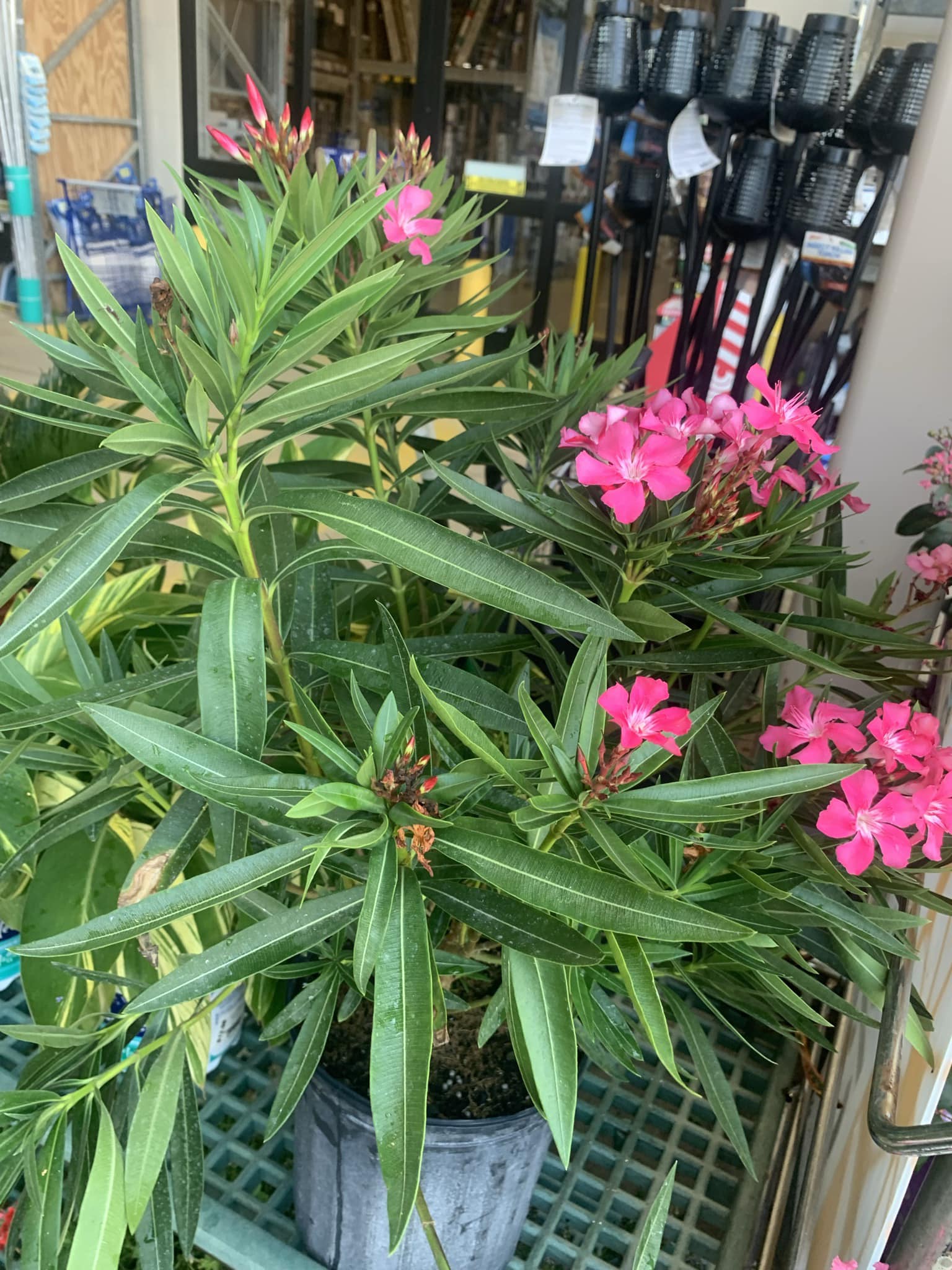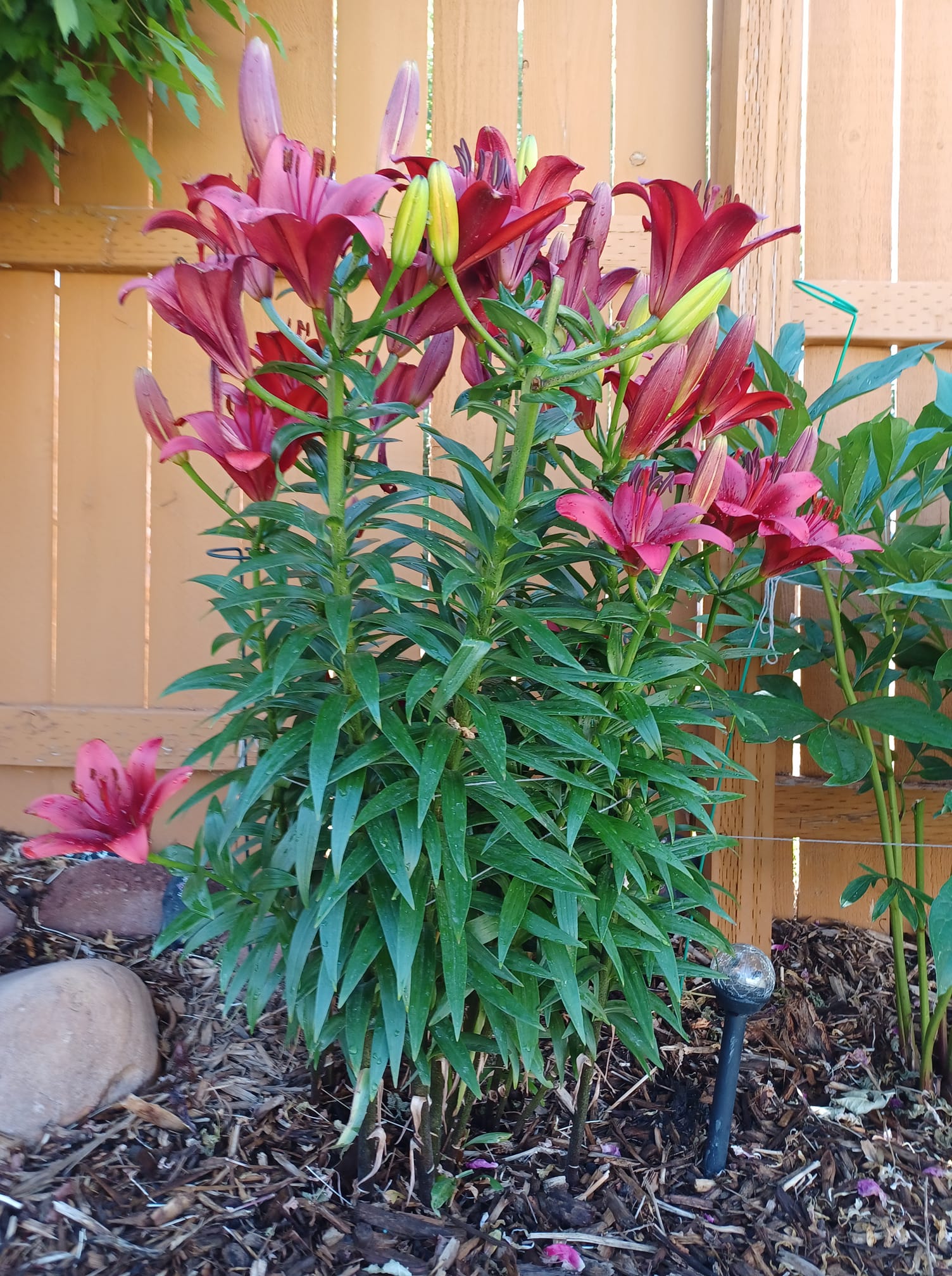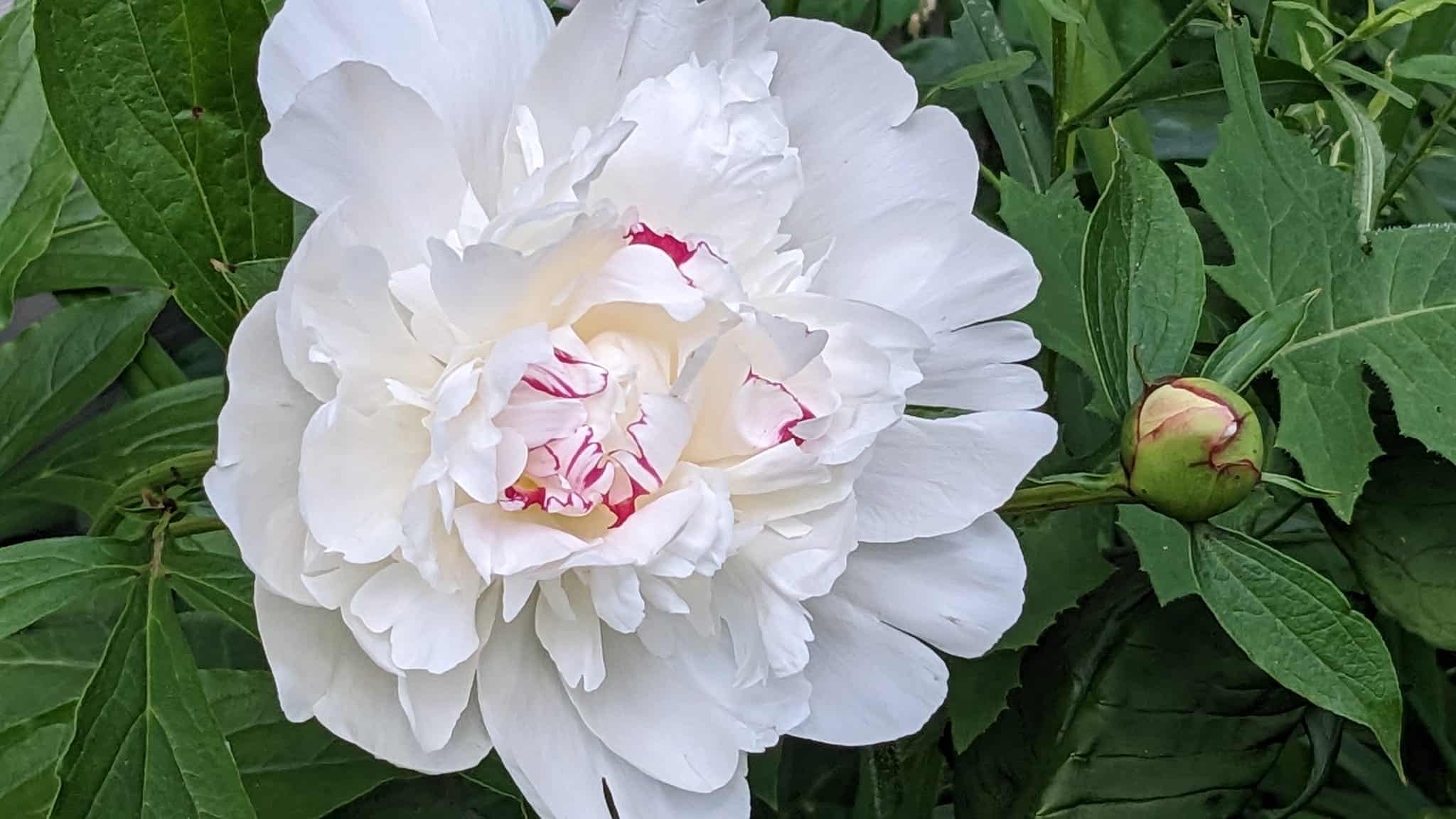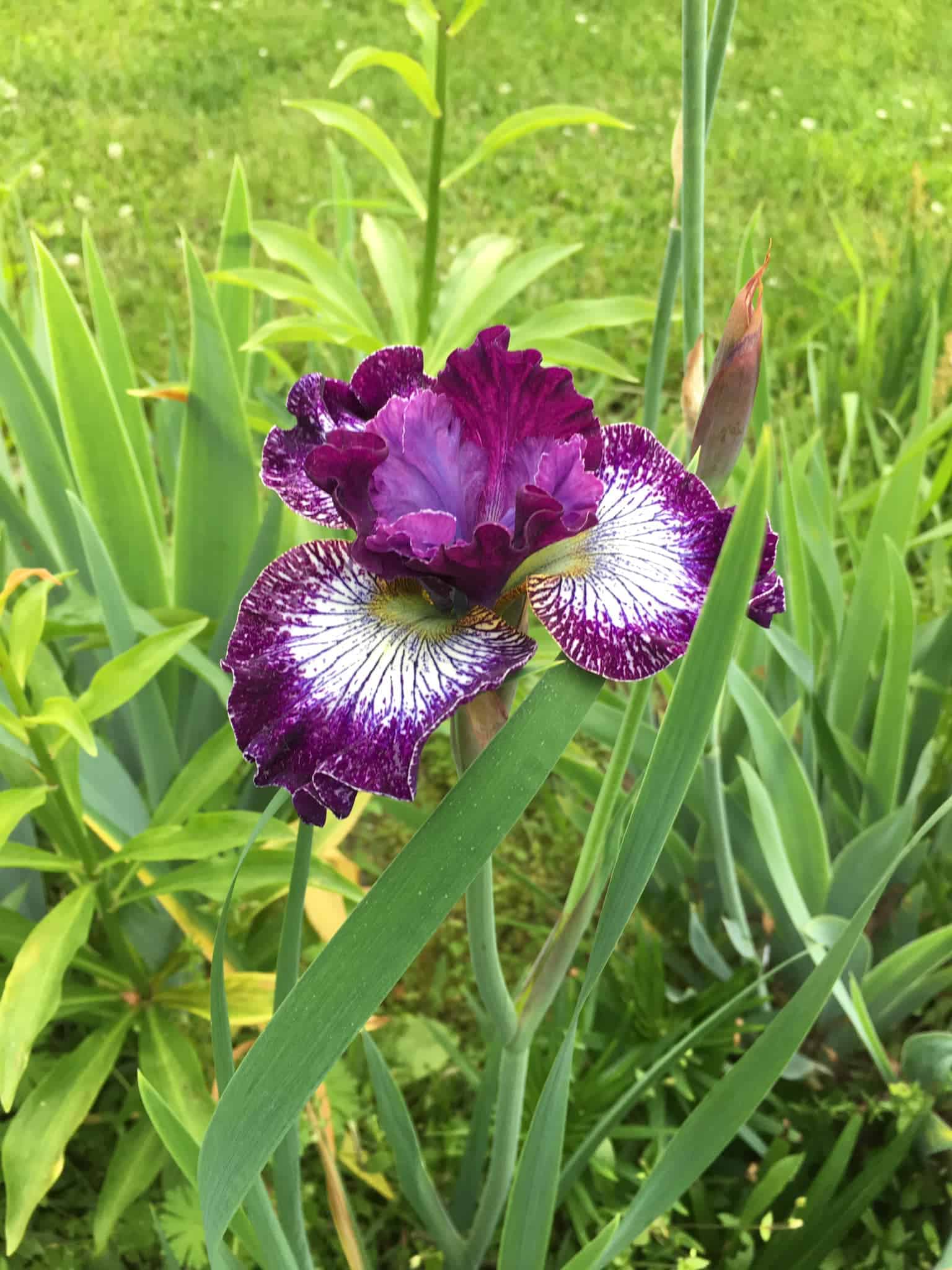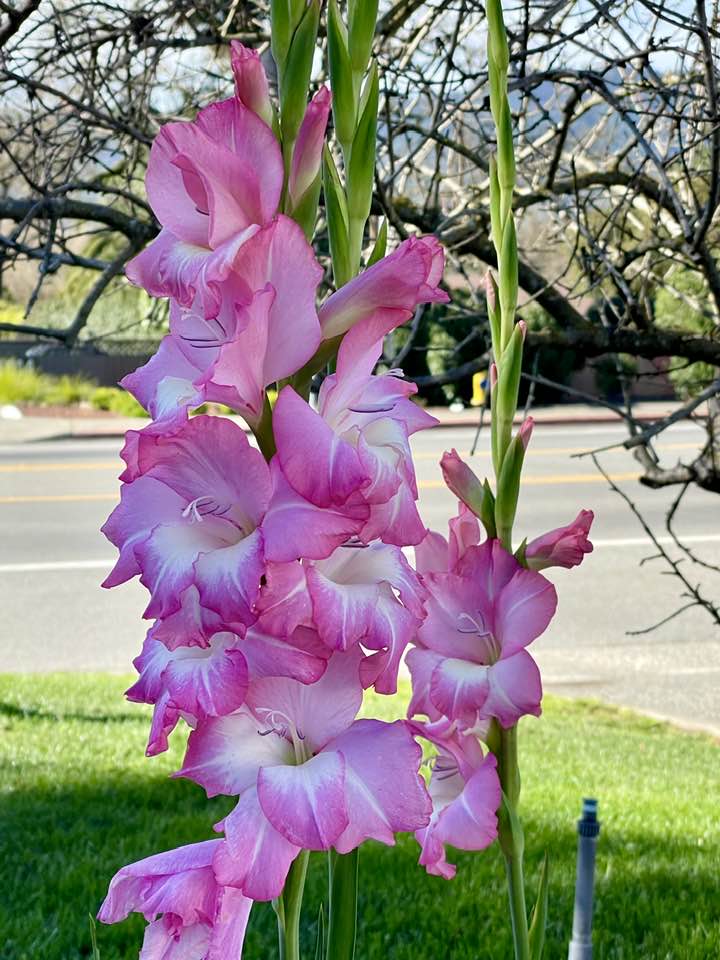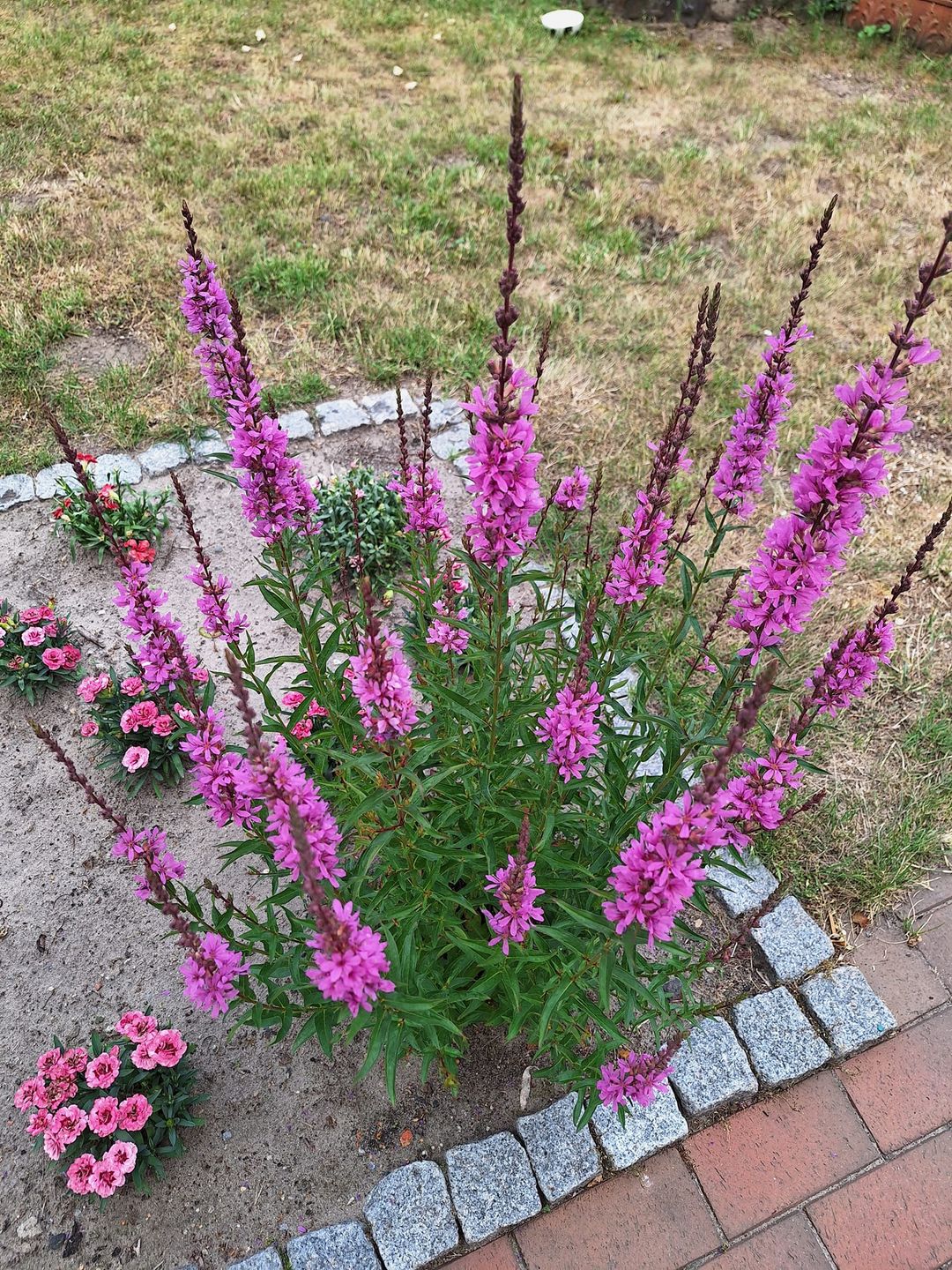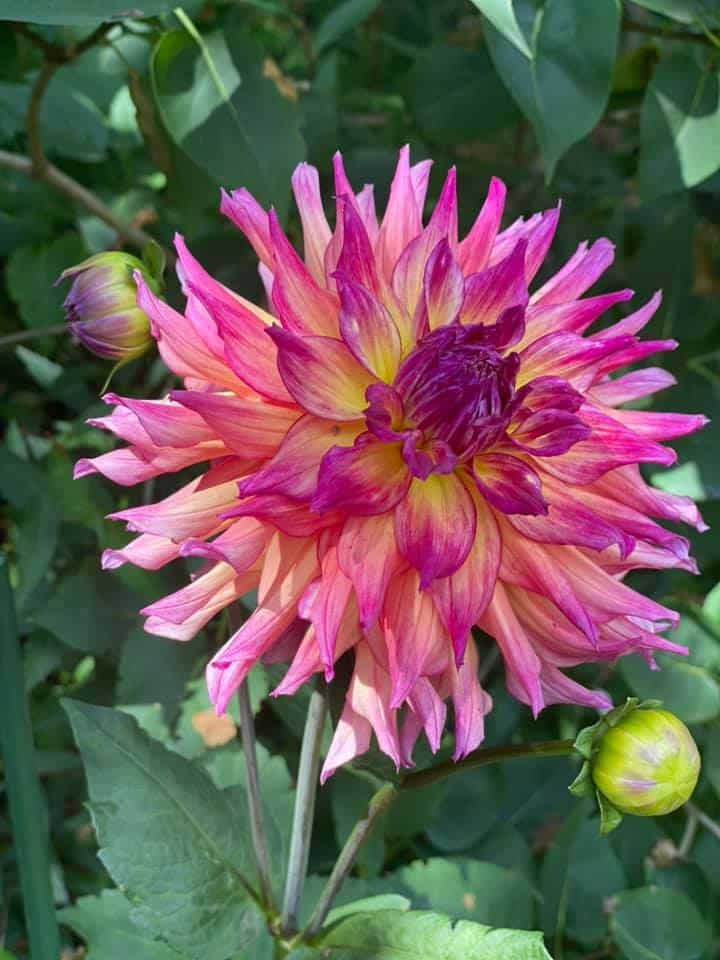Flowers have a remarkable ability to transform and beautify any space they inhabit, infusing your outdoor and indoor areas with life, vitality, and aesthetic charm. They make excellent companion plants, helping attract beneficial insects, repel pests, provide shade and support, and contribute to the overall ecological balance.
However, not all plants play well together. So, while many flowers can complement a vegetable garden, not every flower belongs in your vegetable garden. Some flowers are mischievous troublemakers capable of disrupting the delicate equilibrium of your cherished vegetable patch.
Below are flowers that shouldn’t be planted near a vegetable garden.
9 Flowers That Shouldn’t Be Planted Near A Vegetable Garden
1. Oleander
Oleander should not be anywhere near your vegetable garden because despite producing showy, colorful fragrant flower clusters, all its parts are toxic if ingested. Toxins called cardiac glycosides in oleander make this plant poisonous to animals and humans.
These toxins can cause severe health issues, including abdominal pain, vomiting, and nausea, and can be fatal in severe cases. If oleander leaves or sap come into contact with your vegetables, there is a risk of contamination and potential harm if you consume the affected vegetables.
These vigorous flowers can also take up the resources your vegetables require to grow and thrive, thus affecting their productivity.
If you must handle oleander, always wash your hands afterward. You can still enjoy the beauty of oleanders in your landscape, but keep them at a considerable distance from your vegetable garden or where people and animals might come into contact with the plant.
Hardiness zones: 8-11
Reasons: toxic to animals and people, competitive growth
Related Posts:
- 9 Cheapest Ways To Keep Weeds Out Of Garden
- 13 Flowers You Should Grow in Your Vegetable Garden
- Best Vegetables For Container Gardening
2. Lilies
Lilies’ vigorous and robust growth habits can be detrimental to your vegetables as their thick, fleshy roots can take up the space and resources the neighboring vegetables need. Their presence in your vegetable garden can affect your vegetable plants’ productivity and overall health.
Moreover, its dense foliage can cast a significant shade. Planting lilies too close to sun-sensitive crops can result in reduced photosynthesis, stunted growth, and diminished yields.
Also, planting lilies close to your vegetables is risky since many lily species are toxic. All the plant’s parts, including the leaves, flowers, and bulbs, can contain substances harmful to humans and pets.
You can feel nauseated or vomit if you ingest these parts. The effects can be severe in some animals, especially cats, potentially causing kidney failure or death.
Hardiness zones: 4-9
Reasons: aggressive growth habit, shading, toxicity to humans and animals
3. Foxglove
This flower may be attractive, with tall spikes of tubular flowers, so, understandably, you may want it in your home. However, not so fast; growing foxglove alongside edible vegetables is not a good idea because it contains toxic compounds called cardiac glycosides, which can be harmful if ingested.
As an adult, you will likely not be tempted to ingest foxglove. However, its attractive appearance can entice kids and pets. Unfortunately, the consequences of consuming foxglove, even in small amounts, can be severe.
Foxglove plants also take up a lot of space when growing, which could result in competition for sunlight, water, and nutrients. The effects of this are stunted growth and reduced yields of your vegetables due to shading and resource competition.
In addition, foxglove flower attracts pests like aphids.
Hardiness zones: 4-8
Reasons: toxicity concerns, attracts pests, takes up a lot of space
Read More: Flowers That Come Back Every Year
4. Peonies
These exquisite, long-perennials with an appealing fragrance and large, lush blooms are popular ornamental plants. Peonies could be a lovely addition to your outdoor spaces if you appreciate beautiful, long-lasting flowers. However, keeping these flowers out of your vegetable garden would be best.
Peonies can grow quite large and have an extensive root system. This allows them to compete with vegetables for nutrients, water, and sunlight, potentially limiting the growth and productivity of your vegetables.
Furthermore, peonies’ large, showy blooms can overshadow or crowd out smaller vegetable plants. These flowers also produce allelopathic compounds, which can inhibit the germination and growth of nearby vegetables.
Another reason to keep peonies far from your vegetable garden is their susceptibility to fungal diseases like Botrytis blight and powdery mildew. The problem with this is that the diseases might spread to nearby vegetables.
Hardiness zones: 3-8
Reasons: allelopathic compounds, shading, competitive growth, risk of fungal disease
5. Irises
Irises, which are appreciated for their stunning, iris-like flowers and striking, sword-shaped leaves, make excellent ornamental plants. However, be careful where you plant them. Do not grow them near your vegetable garden.
These flowers’ water needs and growth habits may clash with the requirements of a vegetable garden. Irises prefer consistently moist soil, and their rhizomatous roots can compete with vegetables for water.
Additionally, you can easily disturb their rhizomatous roots, which are located near the soil surface during cultivation and harvesting activities in your vegetable garden. Also, the dense and tightly packed nature of iris foliage can make accessing and maintaining nearby vegetables challenging.
Hardiness zones: 3-9
Reasons: competitive growth, shading, differing water requirements, root disturbance during vegetable harvest
6. Gladiolus
Growing gladiolus in your home is perfectly fine. Its tall flower spikes in white, pink, red, orange, yellow, and purple will make your outdoor spaces visually appealing. But it would be best if you did not use it as a companion plant for your vegetables, especially legumes like beans and peas.
Moreover, the long, sword-shaped leaves of gladiolus can create a dense foliage canopy, potentially shading nearby vegetables and thus impacting their growth. The canopy from the gladiolus plants can keep your vegetables from receiving sufficient sunlight, reducing photosynthesis.
Planting gladiolus bulbs too close to vegetables can also overshadow and impede the growth of neighboring plants. Additionally, you can disturb the root systems of nearby vegetables when digging and storing gladiolus bulbs after the flowering season.
Hardiness zones: 8-11
Reasons: invasive potential, competition growth, shading
7. Purple Loosestrife
Growing purple loosestrife near or in your vegetable garden is not recommended, so it is best to remove it to curb its spread should you find it among your vegetables. It is incredibly invasive and has the potential to spread rapidly, displacing native vegetation in wetlands and other natural habitats.
Also, purple loosestrife can form dense stands, reducing biodiversity and disrupting ecosystems. Its ability to outcompete other plants for resources can lead to ecological imbalances.
Controlling purple loosestrife’s growth is easier said than done because of its extensive root system and prolific seed production. That’s not all; introducing this flower in your home may violate local regulations and result in legal consequences because it is considered an invasive species in many regions.
Hardiness zones: 4-9
Reasons: invasive species, difficult to control, aggressive growth
8. Dahlias
Dahlias can co-exist with your vegetables, adding to the area’s aesthetic appeal, attracting pollinators, and contributing to your garden’s biodiversity. However, doing so may not be such a great idea because it can attract harmful pests like spider mites.
In addition, the dense foliage of tall dahlia varieties can cast shade on shorter vegetables. Also, like other perennials, dahlias can compete with nearby plants, including vegetables, for nutrients, water, and sunlight. Lifting dahlia tubers in the fall can disrupt the nearby vegetables.
Hardiness zones: 8-10
Reasons: pest attraction, nearby vegetable disruption, competition for resources, shading
9. Sunflowers
You will often find sunflowers in a list of flowers to grow in your vegetable garden. They are popular companion plants that attract pollinators, support vining crops, and offer aesthetic appeal. So, you likely wonder why it is on this list.
Depending on the sunflower variety you plant, sunflowers can grow quite tall, which is problematic in a vegetable garden. Taller sunflowers may shade smaller plants in a vegetable garden, reducing the amount of sunlight they receive.
Due to its robust and extensive root systems, this flower can compete with neighboring plants, including vegetables, for nutrients and water. Moreover, sunflowers have the ability to produce allelopathic chemicals that can hinder the growth of specific plants.
For instance, some allelopathic compounds released by sunflowers may inhibit the germination of seeds, which in turn affects the establishment of vegetable crops. This is particularly true if you sow your vegetable seeds near sunflowers.
Hardiness zones: 2-11
Reasons: nutrient competition, shading, allelopathic effects
Final Remarks
Despite their beauty, planting the above flowers near your vegetable garden does more harm than good. Keeping these flowers far from your vegetable garden or out of your property altogether will help ensure the efforts you put into growing and caring for your vegetables are fruitful. The goal is to grow your vegetables with or near flowers that benefit them.

Hey there, fellow plant enthusiasts! I’m Rachel, the green-thumbed writer behind Rooted In Garden. With a deep-rooted love for all things botanical, I’ve made it my mission to help you cultivate a thriving collection of houseplants. As a devoted plant parent myself, I understand the joys and challenges that come with nurturing these leafy wonders. Whether you’re a succulent aficionado, an orchid enthusiast, or simply adore all potted flora, join me on this journey as we explore the secrets to growing and caring for our beloved green companions. Together, let’s create a flourishing oasis indoors.

